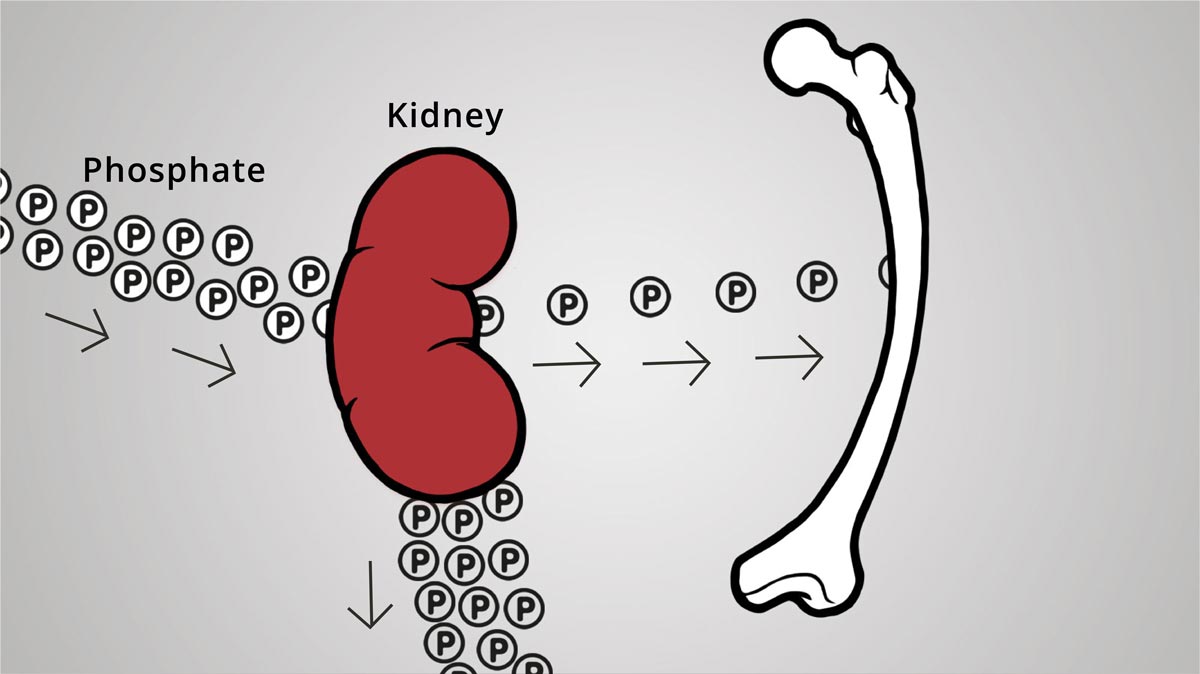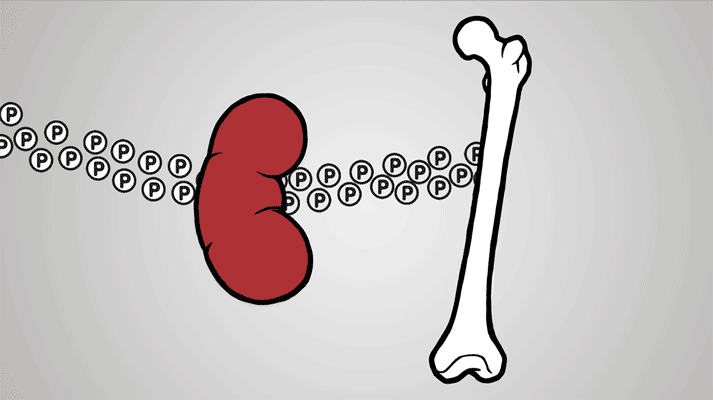Causes of XLH

The importance of phosphate
Throughout our lives, our bodies need phosphate to grow and develop properly. Phosphate is required for healthy bones, teeth, blood and muscle and is involved in providing our bodies with energy. Most of the phosphate from our diets (85%) ends up in our teeth and bones where, alongside calcium, it is essential for lifelong bone health.
One of the hormones that controls how much phosphate we have in our blood is called fibroblast growth factor 23 or FGF23. People with XLH produce too much of this hormone, which makes their kidneys pass too much phosphate into their urine. This is described as ‘phosphate wasting’ and it results in very low phosphate levels in the blood, which is known as ‘hypophosphatemia’.

Phosphate (P) wasting via the kidneys reduces bone mineralization
The X factor
It’s a simple genetic change on an X-chromosome inside your cells that causes your body to produce too much FGF23. This is why the condition is called ‘X-linked’ hypophosphatemia. Around one in three people with XLH is born with this genetic change by chance, but most inherit it from a parent.
More females than males have XLH and there’s a simple reason for this. Men have only one X-chromosome whereas women have two. So, if a father has XLH he will pass it on to all of his daughters, but none of his sons. Whereas sons and daughters of a mother with XLH each have a 50/50 chance of inheriting XLH.
Symptoms of XLH
Osteomalacia comes from the terms “osteo-” meaning “bone” and “malacia” meaning “softening”.
“When you lose too much phosphate you lose an essential building block for healthy bones. Your bones can then become weak and soft – a condition known as ‘osteomalacia’. Soft bones are linked to many of the symptoms seen in children with XLH, such as:
- Bowed legs or knock-knees
- Big wrists and/or knees
- Delayed growth (short stature)
- A waddling gait
- Bone, muscle or joint pain
- Unusual head shape
Osteomalacia comes from the terms "osteo-" meaning "bone" and "malacia" meaning "softening"
During adulthood XLH symptoms include:
- Pseudofractures
- Osteoarthritis
- Joint pain and stiffness
- Enthesopathy (ligament problems)
- Bone pain
- Dental abscesses
- Hearing problems
- Fatigue
The impact of these symptoms varies from person to person regardless of gender, age or genetic link – you might be quite severely affected by certain symptoms while others may not affect you much at all.




